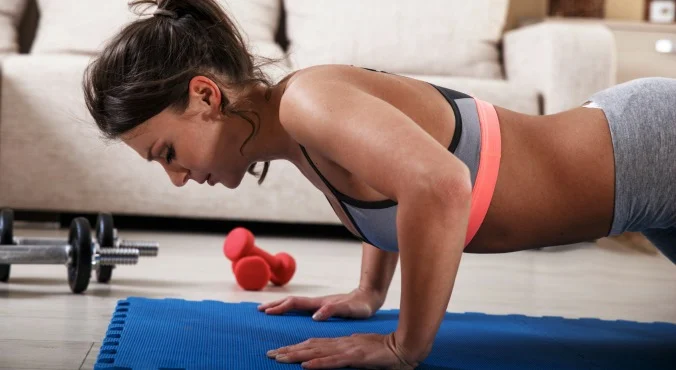Creating an Effective Home Workout Routine

Exercise at home can be challenging. Maintaining consistency without the guidance and accountability of a trainer or workout class instructor can be challenging, however.
But you don’t need an elaborate gym to achieve results from your workouts – even simple bodyweight resistance exercises such as calisthenics can help build strength and muscle at home.
Decide on Your Goals
At-home workouts require mental fortitude to keep going; without the benefit of gym-like motivation or accountability mechanisms to guide our workout regimens, committing to them can be tough.
As you transition into home exercise, consider your goals for physical health and your current fitness level. For instance, if you’re new to working out regularly, five evening workouts a week might be too ambitious; start small with one or two workouts a week and gradually build them into your weekly schedule as needed.
Strength training and high-intensity interval training (HIIT) offer some of the most effective results, improving heart health, strengthening muscles, and burning calories while only needing minimal equipment to perform them in your own home. Find an area big enough to perform bodyweight exercises like jumping jacks, squats, and pushups – then hit it hard!
Identify Your Strengths
Since gyms and fitness studios are closed due to coronavirus outbreak, staying fit at home requires some creativity in terms of exercise. A few resistance bands, a kettlebell, and foam roller will provide plenty of endorphins that will leave you feeling great!
Start by identifying your strengths. This could involve taking an assessment such as the HIGH5 StrengthsFinder or conducting your own self-evaluation. Take note of what activities bring out these attributes, and ask yourself how you could use these assets to reach your goals.
One way to discover your strengths is by hosting a virtual fitness party with friends. Video chat apps make this even more social by inviting participants for quick workouts from home – each person leading one minute of exercise can keep things interesting while targeting different muscle groups!
Determine Your Daily Routine
Establishing an at-home workout routine may seem intimidating when your schedule is already full, but having a plan helps ensure its implementation and gives you something solid to rely on when life gets hectic or unexpected events arise.
Home routines designed with care can help you achieve outstanding results. They can teach you the training technique known as progressive overload, which involves increasing reps while decreasing rest periods between sets, adding challenging variations that push yourself past failure, and gradually increasing time under tension.
Bodyweight exercises like jumping jacks, lunges and push-ups may be included as part of your fitness plan. Furthermore, short sessions of aerobic exercise spread throughout your day (instead of one 30-minute session) or High Intensity Interval Training can also be incorporated. Finally, outdoor activities like walking, biking, swimming or rowing may help boost both mood and immunity – these fresh air activities provide essential Vitamin D boosts!
Create a Schedule
Even amid gym closures caused by coronavirus pandemic, exercisers don’t necessarily require specialized equipment in order to remain consistent with their fitness regimes. Most workouts can be performed using bodyweight, dumbbells or resistance bands as exercise tools; for those needing additional gear consider purchasing versatile tools that can be used multiple ways – for instance instead of buying an actual lat pulldown machine try doing straight arm lat pulls instead, swapping out your seated calf raises with bent over rows instead.
Remaining consistent with an at-home training plan takes some mental fortitude, as there’s no one there to remind or hold you accountable; you will have to do that on your own. To avoid procrastinating or allowing other priorities to interfere, block out training sessions by creating a schedule – write out each day of the week then select one rest day and five workout days as your target date range.






